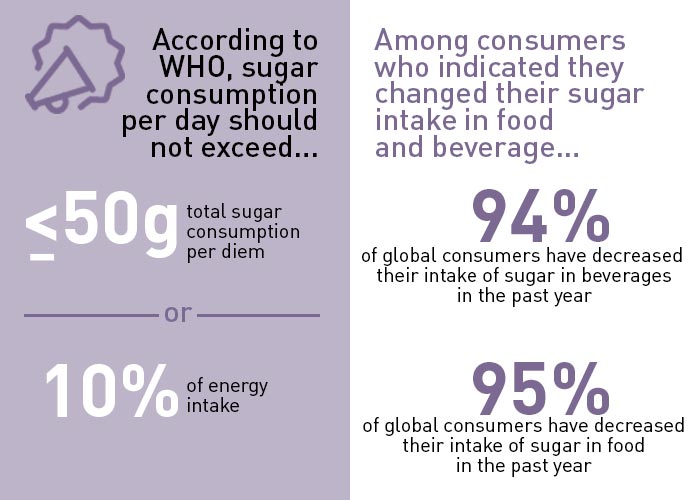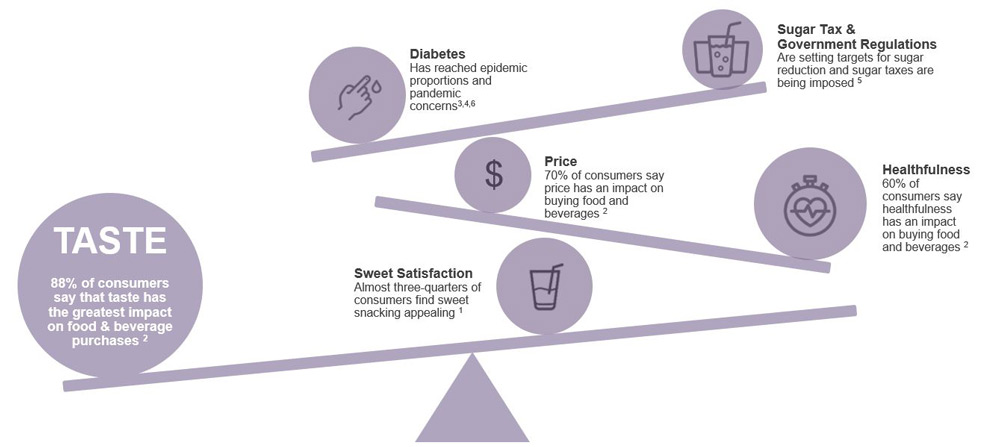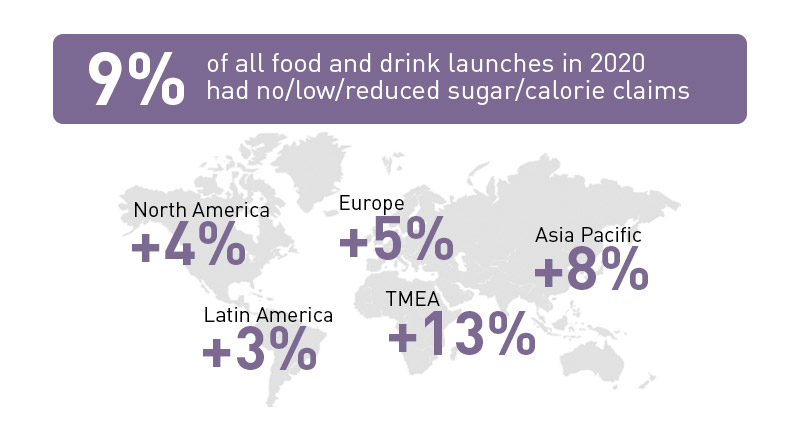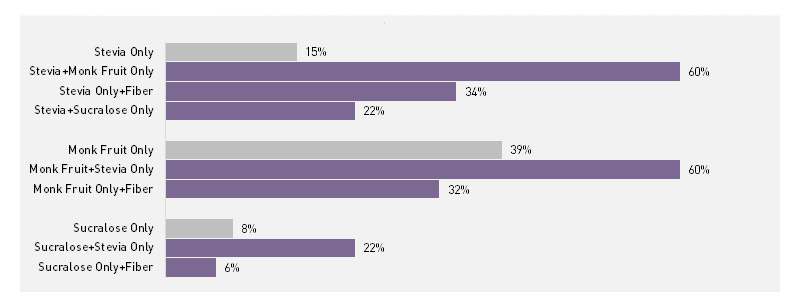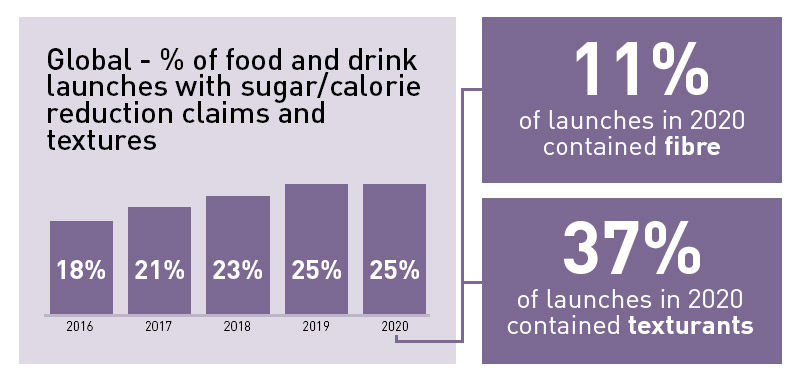Sugar reduction is a global movement. Governments, the World Health Organisation, and health-focused social media influencers are talking about it. Consumers are looking for ways to get healthy and/or stay healthy, especially given the rise in obesity and diabetes. But consumers are also becoming more conscious of their emotional well-being and are seeking ways to support it through moments of pleasure and escapism. Sugar reduction is a balancing act between nutrition and taste.
Sources: 1) The Food Institute: Consumers are Eating More Often, Prefer Sweet Snacks; 2) International Food Information Council Foundation, 2020 Food & Health Survey, April 2020; 3) US Center For Disease Control; 4) World Health Organization Projections Of Global Mortality And Burden Of Disease From 2002 to 2030; 5) multiple sources; 6) Italy Ministry of Health, 20th March 2020;
Global manufacturers are responding to these trends by innovating with sugar reduction. Nine per cent of all food and drink launches in 2020 had no/low/reduced sugar and/or calorie claims. There is a particular boom in alcoholic drinks, as well as nutrition and meal replacement drinks and in soups, sauces, dressings and prepared meals.
Global growth of product launches with no/low/reduced sugar and/or calorie claims
CAGR 2015-2020
Source: Mintel GNPD launches 2015 – 2020 and claims matches one or more of [Diabetic; Diet/Light; Sugar Free; Low/No/Reduced Carb; Low/Reduced Sugar; Low/No/Reduced Glycemic; Low/No/Reduced Calorie; No Added Sugar]
Interestingly, sugar reduction product launches with sugar and/or calorie reduction claims using combinations of sweeteners have outpaced launches using a single sweetener. Formulating with combinations often creates a “better-for-you” product, without sacrificing on the sweet taste consumers enjoy.
Global growth of food and drink product launches by sweetening ingredient(s)/combinations
CAGR 2016-2020
Source: Mintel GNPD
Food and beverage companies are also innovating with fibre to help achieve sugar reduction, without sacrificing taste and product integrity. Twelve per cent of the launches in 2020 with sugar/calorie reduction claims contained fibre, and we’re increasingly seeing texturants ranges being incorporated too, with as many as 37% of launches containing texturants.
Source: Mintel GNPD, Global
Consumer needs
Food and drink that is better for them but satisfies their sweet tooth.
Customer challenges
Replacing sugar while minimising impact on mouthfeel, bulk, texture, browning, and more.
Deliver on affordability, health and wellness, and most importantly, taste experience.
Using few and recognisable ingredients without sacrificing taste or sensory experience.
Sweeteners
✓ Rare sugars
✓ Bulking sweeteners
✓ Flavours
Fibres
✓ Add back the bulk and viscosity of nutritive sweeteners.
